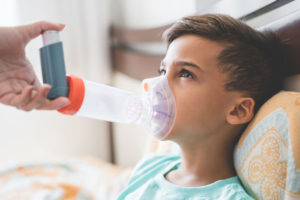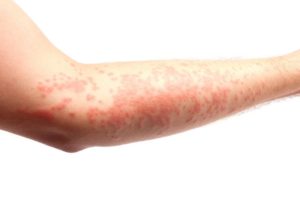Summer Allergies
 We have all heard about Spring and Fall allergies. The severity of the pollen seasons is always predicted as we enter Spring and Fall and there are numerous news articles and television pieces on the subject. You may seem like an expert on these seasonal allergies, but do you know that Summer brings its own allergy annoyances. Summer allergies are generally not discussed much in the media or amongst ordinary people. They are in fact quite bothersome to individuals who suffer from them however.
We have all heard about Spring and Fall allergies. The severity of the pollen seasons is always predicted as we enter Spring and Fall and there are numerous news articles and television pieces on the subject. You may seem like an expert on these seasonal allergies, but do you know that Summer brings its own allergy annoyances. Summer allergies are generally not discussed much in the media or amongst ordinary people. They are in fact quite bothersome to individuals who suffer from them however.
In the Summer, there are a multitude of allergic conditions that affect the population. Some of these may include allergic rhinitis (i.e., hay fever), allergic conjunctivitis (i.e., eye allergies), asthma, insect sting allergies, and pollen-food allergy syndrome (oral allergy syndrome).
Allergic rhinitis and allergic conjunctivitis symptoms may include runny nose, nasal congestion, itchy nose, post-nasal drip, sneezing, itchy eyes, watery eyes, redness of the eyes, puffy eyes, sinus congestion, sinus headaches, snoring, and/or fatigue. Individuals with allergic rhinitis and allergic conjunctivitis may exhibit physical markings around their faces which may indicate to allergists that they are atopic. Such signs may include:
- Allergic shiners: Dark circles under the eyes that result from chronic nasal congestion
- Dennie’s lines or Dennie-Morgan folds: Lines or folds in the skin just below the lower eyelids which appears a wrinkle in the skin
- Nasal crease: This is also called the allergic salute or nasal salute and is formed from the repetitive upward rubbing and wiping of the nose using the palm of one’s hand. Over time, a horizontal white line is formed at the junction of the lower one-third and upper two-thirds of the nose. This nasal crease is more common in children.
- Long face syndrome: A disproportion of facial features that includes a narrow face, large chin, and an open bite (i.e., lack of contact between the front teeth). It can be caused by chronic nasal congestion in children which leads to mouth breathing. This in turn leads to a high-arched palate which subsequently causes a change in the facial features in this condition. The face appears droopy and tired looking. Orthodontic treatment is usually necessary to treat these structural abnormalities.
The causes of allergic rhinitis and allergic conjunctivitis in the Summer are mostly due to exposure to molds and pollens, particularly grass pollen in the beginning of Summer and ragweed pollen towards the end of Summer. In addition, allergy sufferers can still be bothered by the usual perennial allergens such as dust mites, cockroaches, and pets.
Asthmatics may experience wheezing, chest tightness, coughing, and/or shortness of breath in the Summer. Exposure to the Summer environment may mean exposure to more mold and pollens, increased humidity, more exercise, excessive heat, and increased air pollution (i.e., smog) than that of other seasons. These factors may trigger asthma in certain sensitive individuals.
In the Summer, one must be extra careful about stinging insects. Honey bees, wasps, yellow jackets, white-faced hornets, and yellow-faced hornets are the stinging insects indigenous to the mid-Atlantic region of the U.S. In other warmer areas of the U.S., fire ants are another stinging insect that can cause serious anaphylactic reactions. Anaphylactic reactions to individuals with insect sting allergies may be life-threatening and it is important to see a board certified allergist like the ones at Black & Kletz Allergy if you have had a reaction to an insect sting. Allergy testing to the stinging insects and possible subsequent treatment with an epinephrine autoinjector and/or allergy shots to venoms (i.e., venom immunotherapy) may be utilized.
There is also a condition called pollen-food allergy syndrome (i.e., oral allergy syndrome) that is an allergic reaction in the mouth and throat to certain raw fruits, vegetables, and some tree nuts. The symptoms may include an itchy mouth or throat, and/or swelling of lips, tongue, mouth, or throat. The reaction is caused by cross-reacting allergens that are found on both pollens and the associated food. These foods have proteins that are structurally similar to specific pollens and the body “thinks” that the proteins in these foods are in fact pollen and as a result, mounts an immunologic or allergic response. Local itching and swelling are usually the result, although systemic reactions may occur in very rare circumstances. It is important to note that when these foods are cooked, the protein is denatured and no longer looks like the pollens. Thus, individuals may be able to eat these cooked fruits and vegetables without symptoms, in most cases. An allergist may prescribe an epinephrine autoinjector in those individuals with more severe symptoms.
The board certified allergists at Black & Kletz Allergy have been diagnosing and treating allergies and asthma, for more than 5 decades in the Washington, DC, Northern Virginia, and Maryland metropolitan area. We treat both pediatric and adult patients. We have officed in Washington, DC, McLean, VA (Tysons Corner, VA), and Manassas, VA. Our Washington, DC and McLean, VA offices are Metro accessible and there is a free shuttle that runs between the McLean, VA office and the Spring Hill metro station on the silver line. The allergy specialists at Black & Kletz Allergy are very familiar about the most current treatment options for patients with allergic rhinitis, allergic conjunctivitis, asthma, insect stinging allergies, and pollen-food allergy syndrome and can promptly answer any of your questions. To schedule an appointment, please call any of our offices or you may click Request an Appointment and we will respond within 24 hours by the next business day. We have been servicing the greater Washington, DC area for more than 50 years and look forward to providing you with exceptional state-of-the-art allergy and asthma care in a welcoming and pleasant environment.

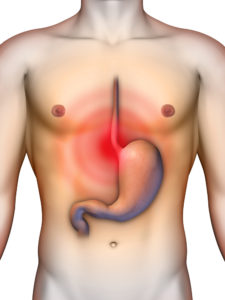 There are at least 4 major groups of allergic manifestations which are as follows:
There are at least 4 major groups of allergic manifestations which are as follows: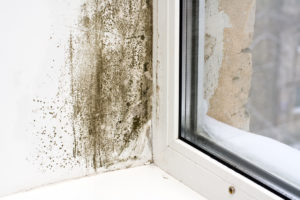
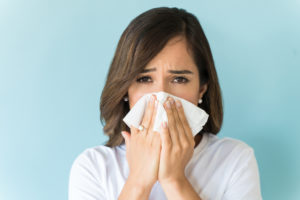 Pollen is comprised of a powdery substance whose individual grains contain the male part (i.e., anthers) of seed-bearing plants. The pollen causes the female part of the same type of flower to produce seeds. Pollen is carried to other plants via the wind or by insects. It is when the pollen is dispersed by the wind that individuals are exposed to it by breathing in and inhaling the pollen-infested air. As a result, certain individuals become sensitized and develop allergies to pollen. People who develop pollen allergies may manifest their symptoms in various manners. Some individuals develop
Pollen is comprised of a powdery substance whose individual grains contain the male part (i.e., anthers) of seed-bearing plants. The pollen causes the female part of the same type of flower to produce seeds. Pollen is carried to other plants via the wind or by insects. It is when the pollen is dispersed by the wind that individuals are exposed to it by breathing in and inhaling the pollen-infested air. As a result, certain individuals become sensitized and develop allergies to pollen. People who develop pollen allergies may manifest their symptoms in various manners. Some individuals develop 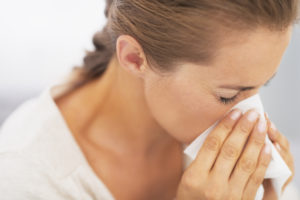 Rhinitis is a term that means inflammation of the mucus membranes of inside the nose. It is a very common condition. Rhinitis can either be acute or chronic. Acute rhinitis is inflammation of the mucus membranes of the inner nose that lasts up to 4 weeks in duration. It is not uncommon for acute rhinitis to last a few days as in the case of the common cold. Chronic rhinitis, on the other hand, is inflammation that lasts more than 4 weeks in duration. The symptoms of rhinitis may include runny nose, nasal congestion, post-nasal drip, and/or sneezing. Rhinitis can be classified into
Rhinitis is a term that means inflammation of the mucus membranes of inside the nose. It is a very common condition. Rhinitis can either be acute or chronic. Acute rhinitis is inflammation of the mucus membranes of the inner nose that lasts up to 4 weeks in duration. It is not uncommon for acute rhinitis to last a few days as in the case of the common cold. Chronic rhinitis, on the other hand, is inflammation that lasts more than 4 weeks in duration. The symptoms of rhinitis may include runny nose, nasal congestion, post-nasal drip, and/or sneezing. Rhinitis can be classified into  Pruritic urticarial papules and plaques of pregnancy (PUPPP), also known as polymorphic eruption of pregnancy, is the most common skin disease of pregnancy. This polymorphic (i.e., different shapes and forms) skin eruption occurs in approximately 0.5% or 1 in 200 pregnancies. The cause of this condition is generally unknown.
Pruritic urticarial papules and plaques of pregnancy (PUPPP), also known as polymorphic eruption of pregnancy, is the most common skin disease of pregnancy. This polymorphic (i.e., different shapes and forms) skin eruption occurs in approximately 0.5% or 1 in 200 pregnancies. The cause of this condition is generally unknown.